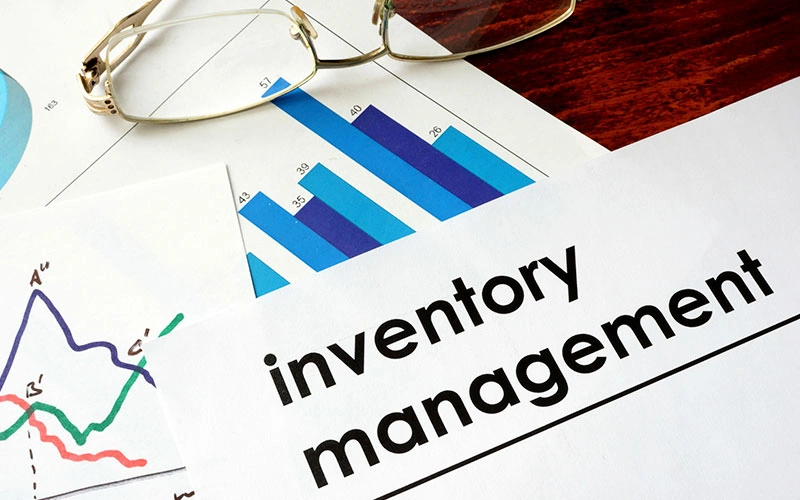Optimizing Inventory: The Key to Unlocking Business Growth and Profitability
May 23, 2022
Not many know or understand that accurate inventory management is a crucial aspect of business profitability.
Effective inventory management is a critical business practice that ensures a business is able to meet its delivery obligations. However, only a few businesses are keen to ensure their inventory is well managed. That is why many small businesses need to effectively manage their products or materials. You will notice that some small businesses stock too little inventory chasing customers. Other small businesses overstock items, which brings about cash flow issues.

Effective inventory management should strike a balance between overstocking and understocking. In this article, we will take you through tips and a bit on how to improve your inventory management. We will help you stock what your business needs while maintaining a healthy cash flow.
Tips for managing your inventory
The tips below are easy to follow and can help your business improve inventory management.
1. Prioritize your inventory for better inventory management.
As a business, you need to understand your ideal ordering quantities and the frequency. This helps you categorize your inventory into priority groups. This will also help you determine the items that are essential to your business.
Business experts have shared suggestions that will help determine these various groups. They came up with three ways to categorize your inventory:
-
A group: Items in the A group are higher-ticket items. Higher ticket items are products that are expensive to purchase and are valuable to the buyer. These items are not frequently bought; therefore, you need fewer of them.
-
C group: Items in the C category are lower-cost items. Low-cost items normally refer to products with a low price point and sell quickly.
-
B group: The B group consists of items in between. In-between items are usually moderately priced items that are sold more slowly than C items but faster than A items.
2. Track all product information to manage inventory better.
The second tip is to ensure all product information for all inventory items is stored within an inventory management system. The information that should be kept includes:
- Stock Keeping Units
- Barcode data
- Suppliers data such as name, location, type of products supplied
- Countries of origin
- Lot numbers
An important factor is to keep track of the cost of each item so that you are aware of factors that influence pricing. Such factors include scarcity and seasons e.g., holiday seasons.
3. Audit your inventory for better inventory management.
Continuous auditing is crucial to ensure your inventory matches what is indicated in your software. Comprehensive inventory counts vary from business to business. Some do it weekly, monthly, bi-annually, or even daily for their quick-selling products. At the end of the day, the idea for a comprehensive audit is to ensure it matches what you have physically and on the software. Analyze Inventory on a Balance Sheet by following the best practices outlined in this article.
4. Analyze supplier performance for better inventory management.
Does your supplier deliver on time? Does your supplier deliver goods in good condition, or are they always damaged? It is important to ensure your suppliers are able to deliver inventory at the required time and in good condition. An unreliable supplier can cause problems for your inventory. When this happens, you need to take action. Have a sit down with your supplier(s) and have a discussion to figure out where the problem is. If they are not showing signs of changing, you should switch suppliers before it is too late.
5. Practice the 80/20 inventory rule for better inventory management.
In business, there is an 80/20 rule that states that 80 percent of your business profit comes from 20 percent of your stock. With this said, the business should prioritize the 20 percent of your stock. How do you manage this 20 percent? You need to understand their sales cycles and monitor them closely.
6. Be consistent in how you receive stock for better inventory management.
When it comes to receiving stock, it is advised you employ a standardized inventory process that is followed to the letter by your team. If you are not careful, errors during this activity may leave you with shortages that do not align with your numbers at the end of the year. Ensure all stock is verified when received, stored together, counted correctly and counter-checked against the order given.
7. Track sales for effective inventory management.
It may seem obvious, but ensuring you track your goods helps you understand what items you sold and how many you sold. This helps keep your records up to date, knowing when you need to restock. Understanding the broader picture of how items sell is essential to controlling your inventory.
8. Invest in inventory management technology.
Invest in a real-time inventory management software that makes asset tracking easier, faster, reliable, and accurate. Using manual systems makes it harder and also easily prone to error!
9. Use inventory management tools that integrate with your other solutions.
Inventory management software is not the only technology for managing stock. For example, barcode scanning apps and POS systems can help you stay on track. However, do not just buy any software. Find ones that are able to provide you with the services you need.
10. Back-Ups
If your business makes use of cloud service to store inventory data, it is crucial to have back-ups. A back-up system ensures business continuity when all systems have failed. A back-up system also stores past information of sales and inventory received in case there is need to refer to past transactions.
The best inventory management software
Improving your inventory management is one of the sure ways of increasing profits from your business. A few tweaks could help boost your profits higher. Being able to predict when and how much your sales will be in the future will ensure accurate sales.
Choosing the best inventory management software for small and medium business is crucial for your efficiency. Good software should answer various factors such as your budget, business type, and features like mobile apps, and cloud back-ups.
Being abreast with the items that enter and leave involves crucial steps such as auditing, tracking, and ordering. Your business can improve its inventory management with a proper inventory management tool like Britecheck.
Join Webinar to Learn How to Boost your Business Efficiency with Britecheck Inventory.
